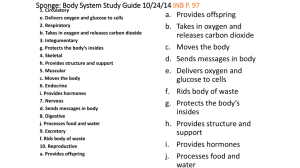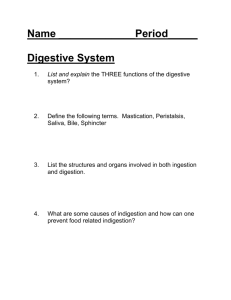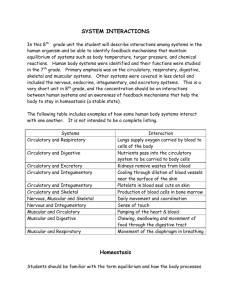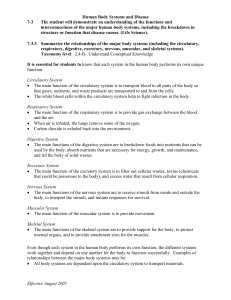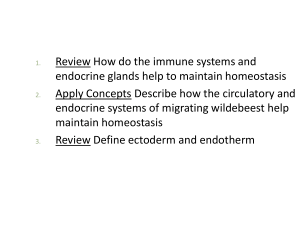Grade 8 Chapter 21 Study Guide with answers
advertisement
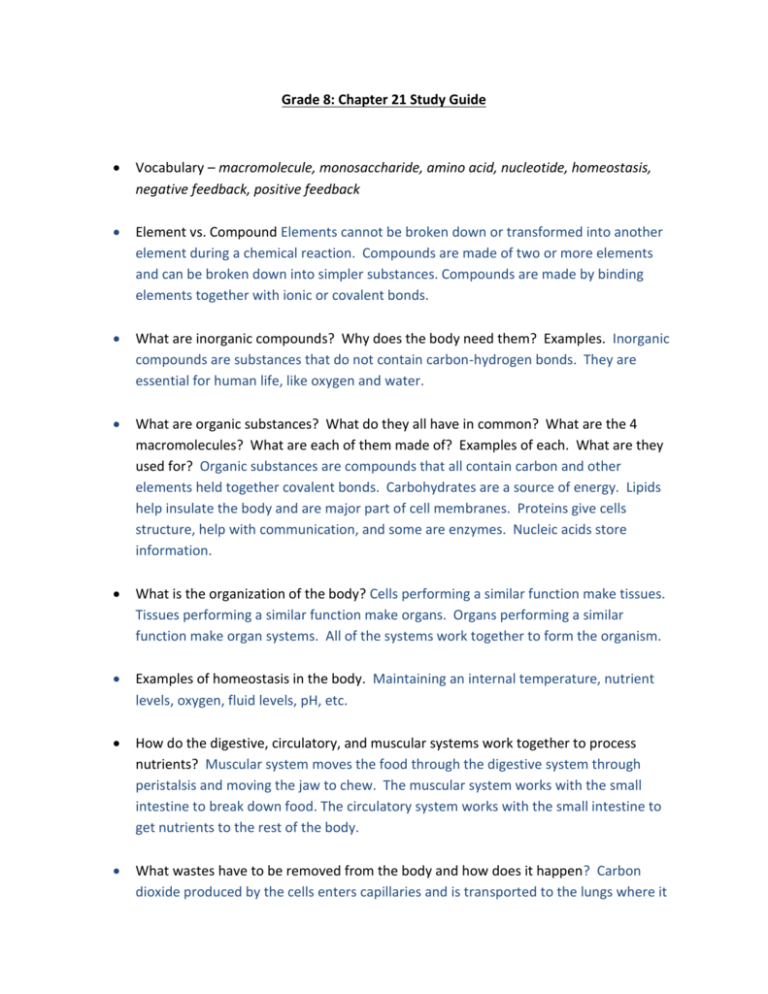
Grade 8: Chapter 21 Study Guide Vocabulary – macromolecule, monosaccharide, amino acid, nucleotide, homeostasis, negative feedback, positive feedback Element vs. Compound Elements cannot be broken down or transformed into another element during a chemical reaction. Compounds are made of two or more elements and can be broken down into simpler substances. Compounds are made by binding elements together with ionic or covalent bonds. What are inorganic compounds? Why does the body need them? Examples. Inorganic compounds are substances that do not contain carbon-hydrogen bonds. They are essential for human life, like oxygen and water. What are organic substances? What do they all have in common? What are the 4 macromolecules? What are each of them made of? Examples of each. What are they used for? Organic substances are compounds that all contain carbon and other elements held together covalent bonds. Carbohydrates are a source of energy. Lipids help insulate the body and are major part of cell membranes. Proteins give cells structure, help with communication, and some are enzymes. Nucleic acids store information. What is the organization of the body? Cells performing a similar function make tissues. Tissues performing a similar function make organs. Organs performing a similar function make organ systems. All of the systems work together to form the organism. Examples of homeostasis in the body. Maintaining an internal temperature, nutrient levels, oxygen, fluid levels, pH, etc. How do the digestive, circulatory, and muscular systems work together to process nutrients? Muscular system moves the food through the digestive system through peristalsis and moving the jaw to chew. The muscular system works with the small intestine to break down food. The circulatory system works with the small intestine to get nutrients to the rest of the body. What wastes have to be removed from the body and how does it happen? Carbon dioxide produced by the cells enters capillaries and is transported to the lungs where it is exhaled. Liquid waste travels through the circulatory system to the kidneys, which make urine. Liquid waste also travels to the skin where fluid is released during sweating. Solid wastes are removed by the excretory system. How does the body transport oxygen? Oxygen enters the when you inhale and is transported by the circulatory system to the rest of the body. Oxygen that is in the capillaries is transported to the rest of the body through larger blood vessels. How does the body coordinate movement and respond to stimuli? How do the nervous and endocrine systems work together? To coordinate movement and respond to stimuli the body uses the nervous system and the endocrine system. The nervous system uses reflexes (a rapid response system) and neurons to send electrical signals to the brain. The endocrine system sends chemical signals in the form of hormones through the circulatory system.
